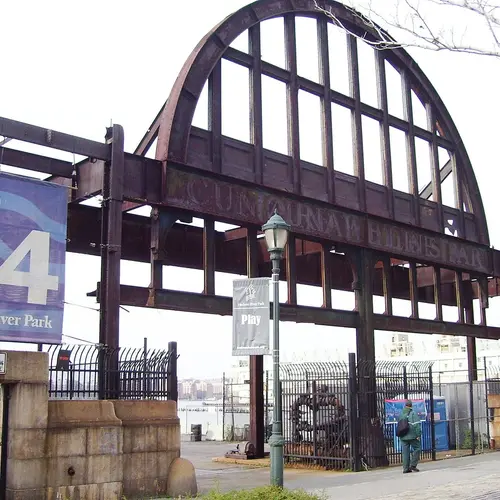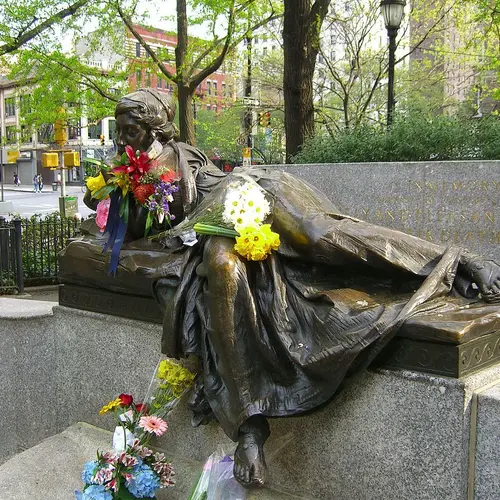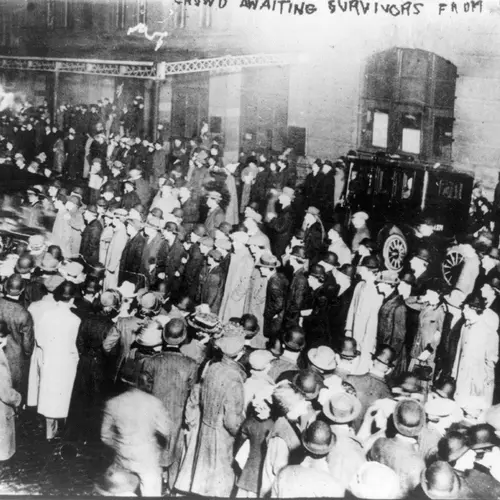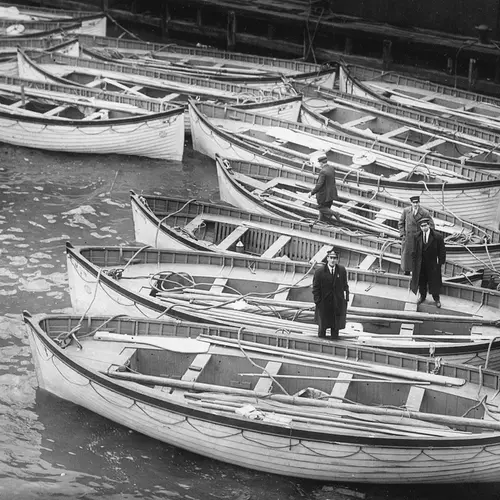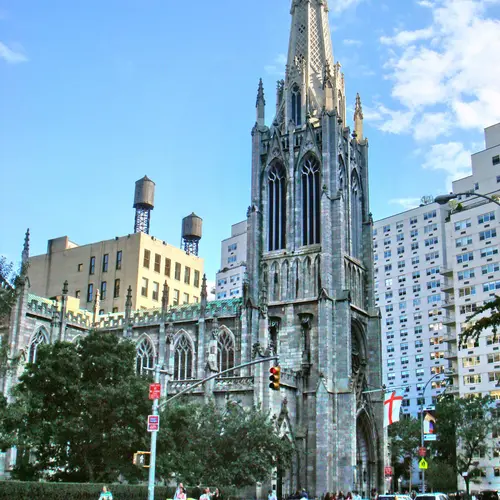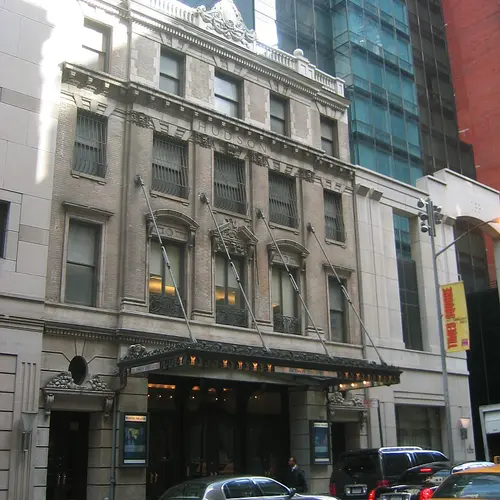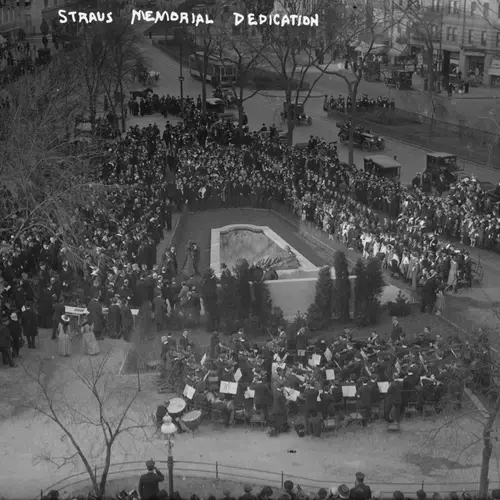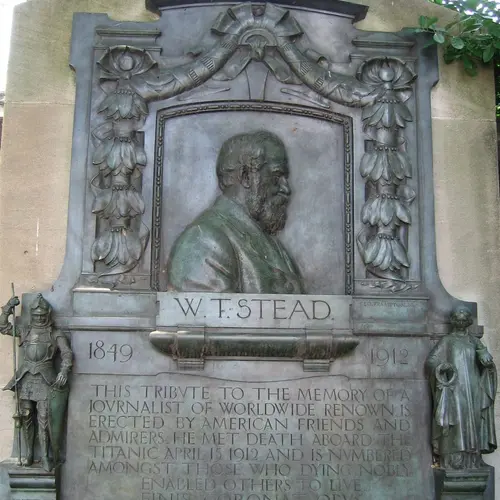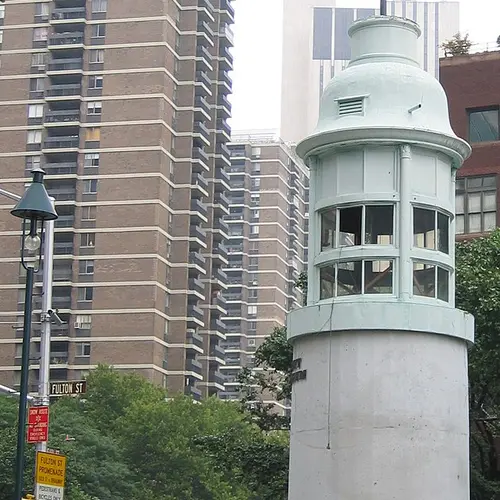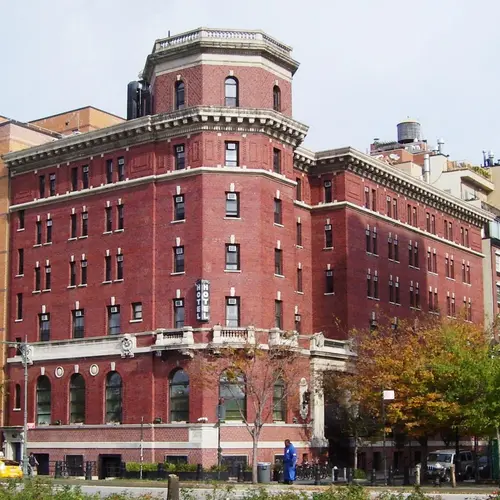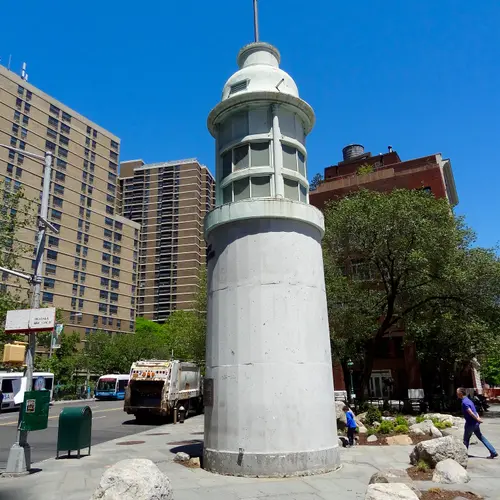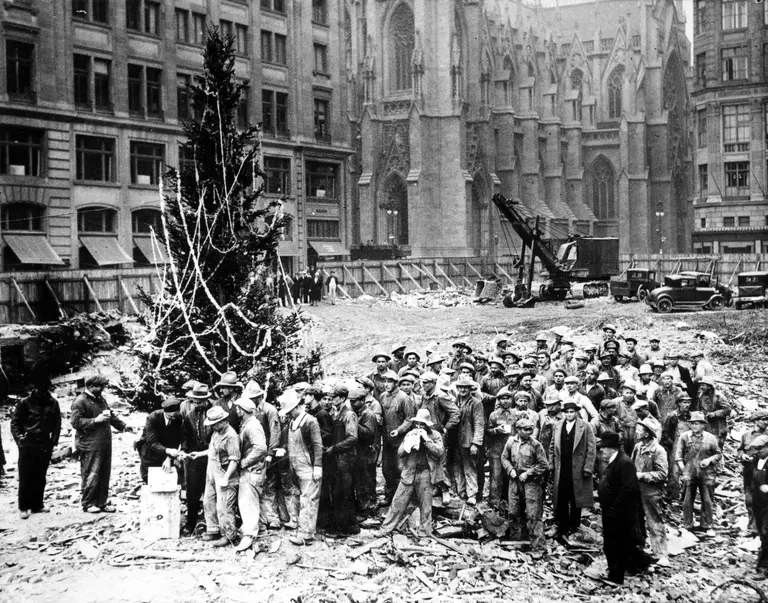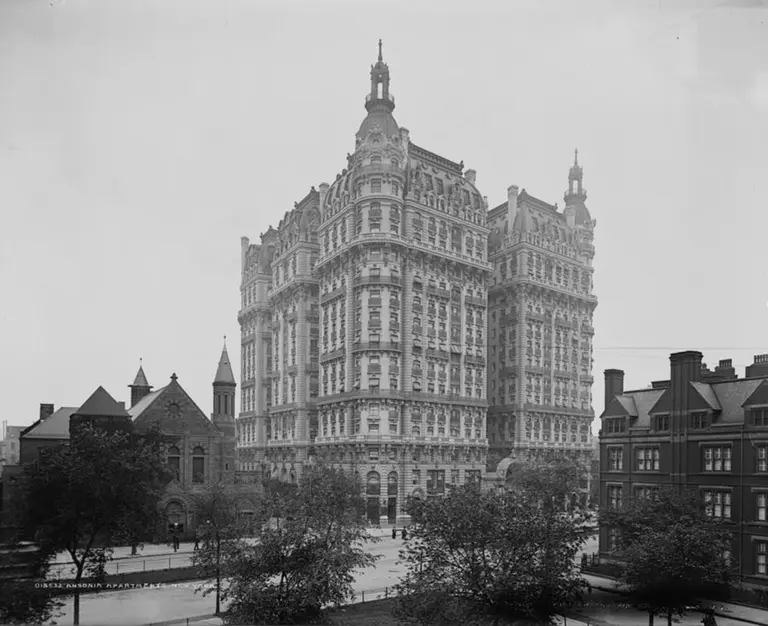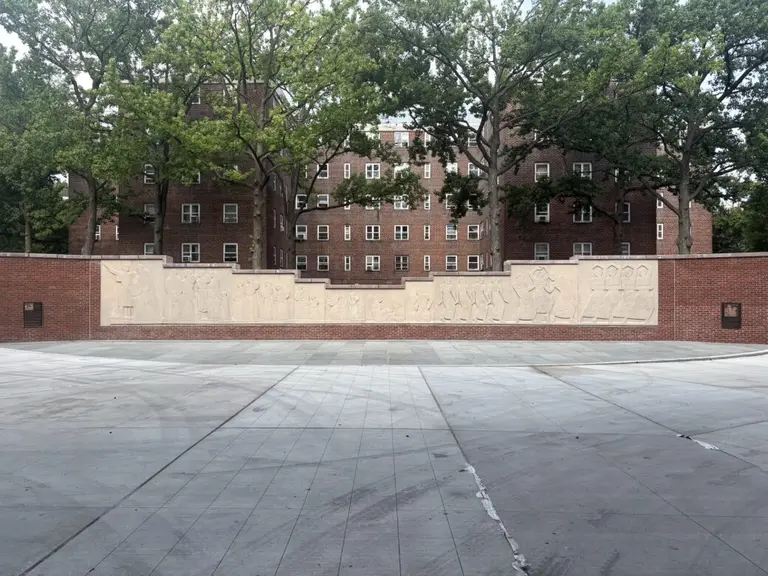10 sites in New York City connected to the Titanic
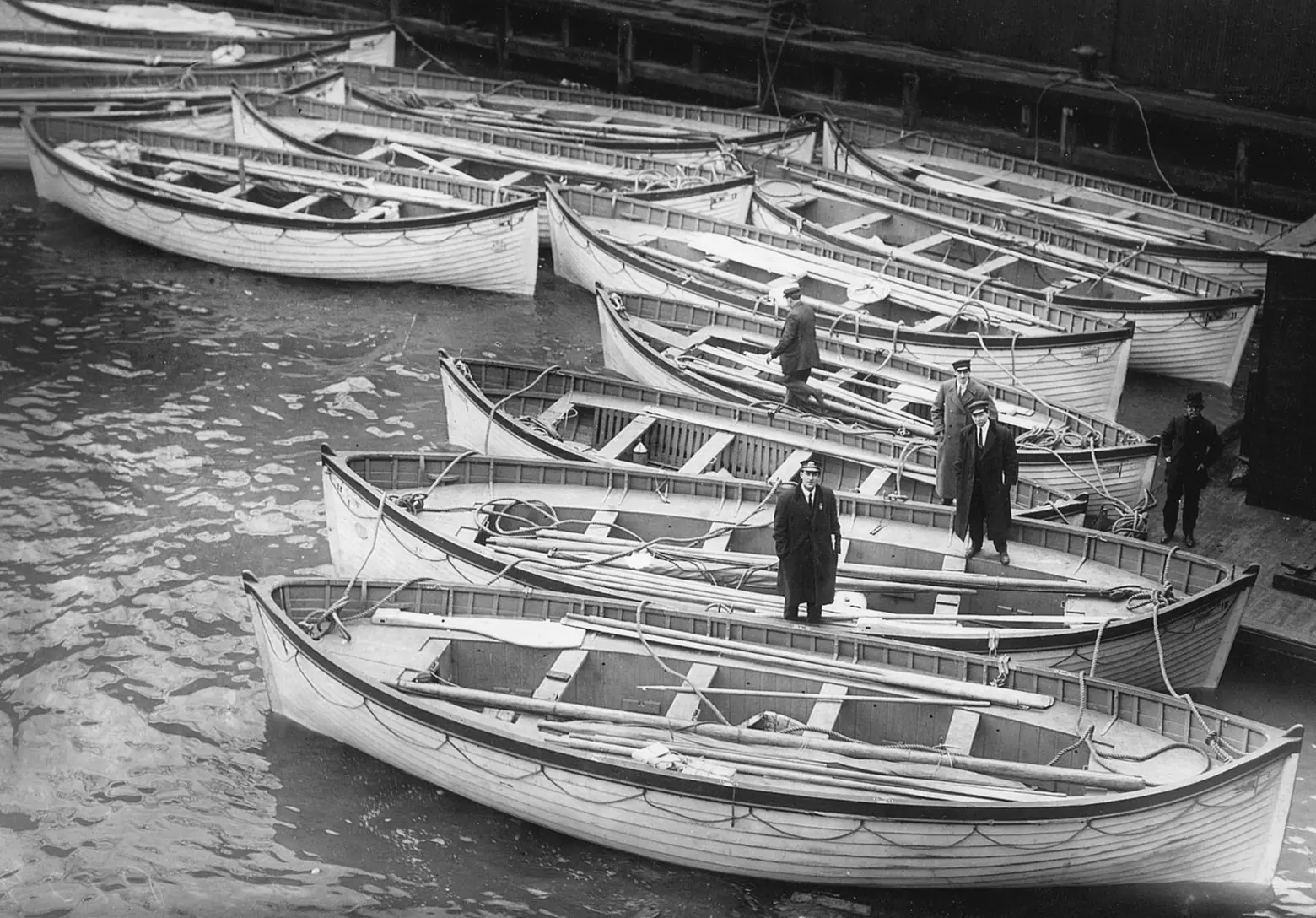
The Titanic’s lifeboats at the White Star Lines Pier 54 in NYC after sinking, via Wiki Commons
When you hear “Titanic” you may think of icebergs, tragedy, Jack, Rose, and a two-hour fight between life and death in the North Atlantic some 375 miles off the coast of Newfoundland. You may not necessarily think of New York City. But the ship, which left Southampton, England on April 10, 1912, was bound for New York and due at Pier 59 on April 17th. After sinking during the early hours of April 15th, the Titanic would never dock in New York, but survivors of the tragedy sailed into the city aboard the Carpathia on April 20th and disembarked at Pier 54. Ultimately, New York’s connection to that fateful voyage goes well beyond its waterfront. In fact, you’ll find sites associated with the Titanic and its passengers throughout the city.
1. Pier 54 and Broadway’s White Star and Cunard Buildings
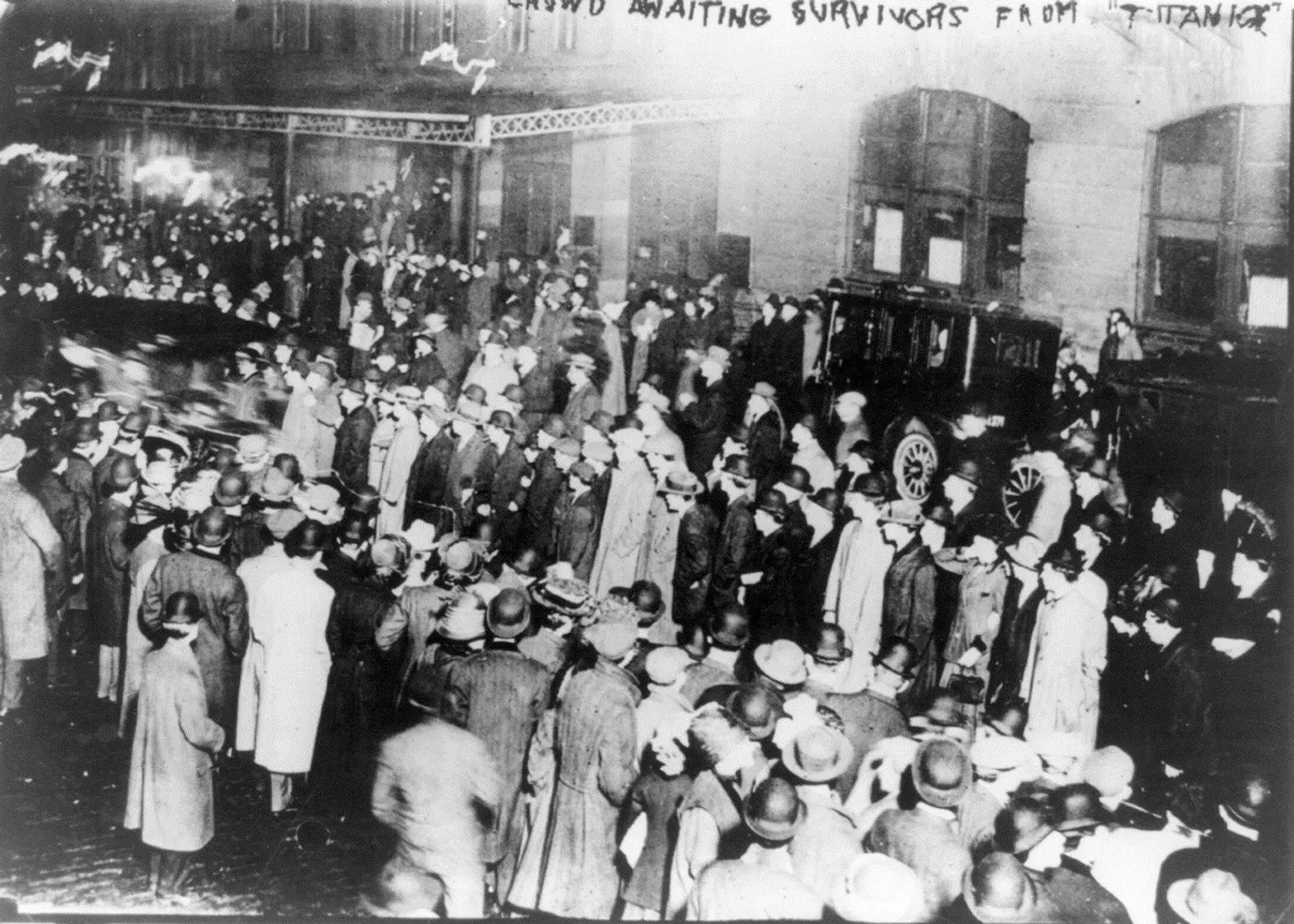 The crowd at the doors of Pier 54 awaiting the arrival at the Carpathia, via Wiki Commons
The crowd at the doors of Pier 54 awaiting the arrival at the Carpathia, via Wiki Commons
Pier 58, a White Star Line pier that was supposed to serve as the Titanic’s final port of call, has long since been subsumed into Chelsea Piers. The remnants of Pier 54, just a few blocks south, still serve as a ghostly reminder of the wreck.
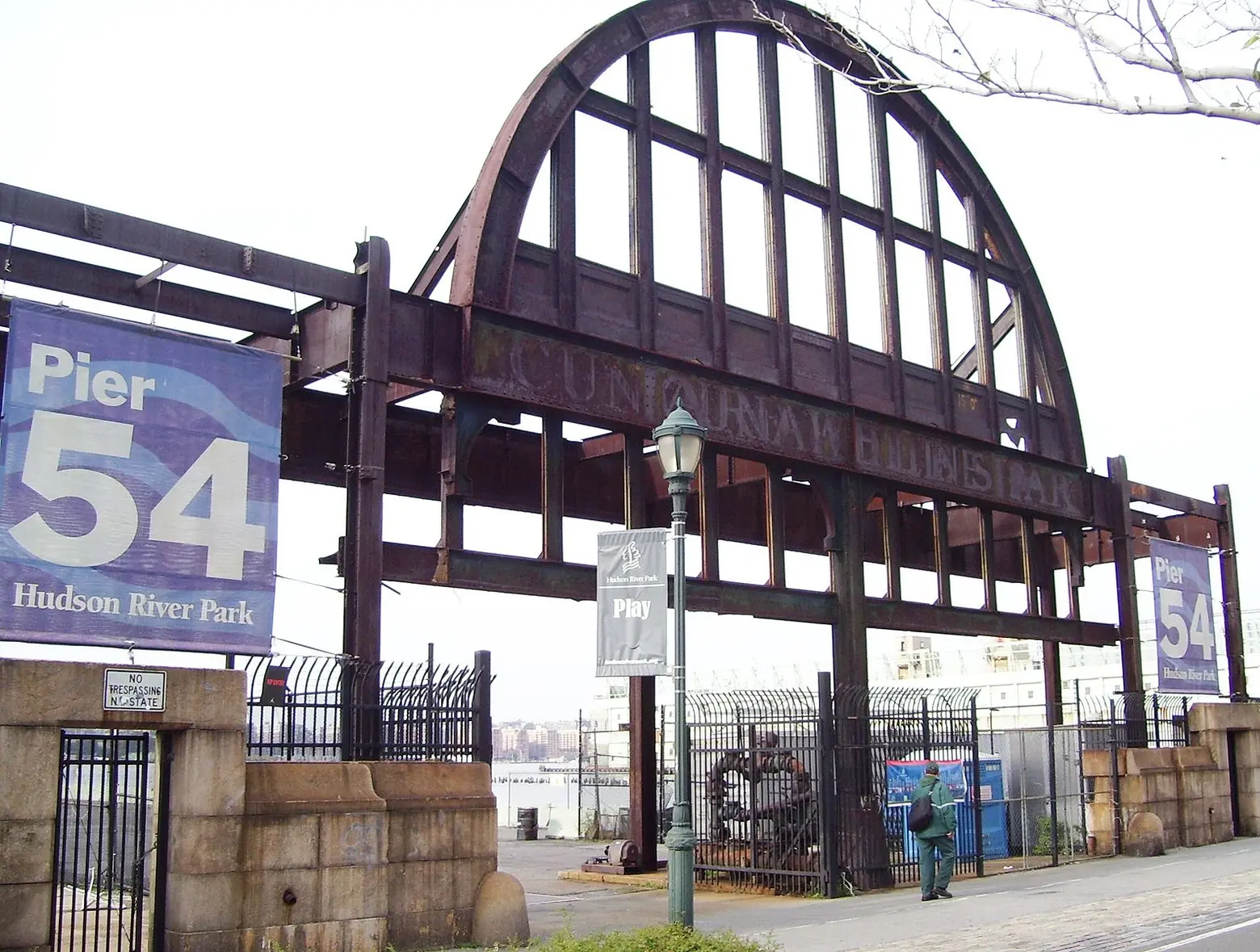
Hudson River Park Pier 54, via Wikimedia
Pier 58 was the property of the White Star Line. Pier 54 was home to Cunard’s vessels. The Cunard and White Star Lines, once fierce competitors in the age of steam travel, were bound together on the night of April 15, 1912, when the Cunard’s Carpathia rescued the White Star’s drowning passengers. The Cunard and White Star Lines merged in 1934, and the rusting arch at the entrance of Pier 54, near 14th Street off the West Side Highway, still reads “Cunard-White Star.”
Further downtown you’ll find the Cunard and White Star Buildings. Lower Broadway was once home to a veritable procession of steamship offices, where travelers could book passage to any number of worldwide ports. The White Star Line was stationed at 9 Broadway and the Cunard Line at 25 Broadway. In 1912, friends and family of travelers aboard the Titanic flooded the offices looking for information about their loved ones.
2. The Jane Hotel
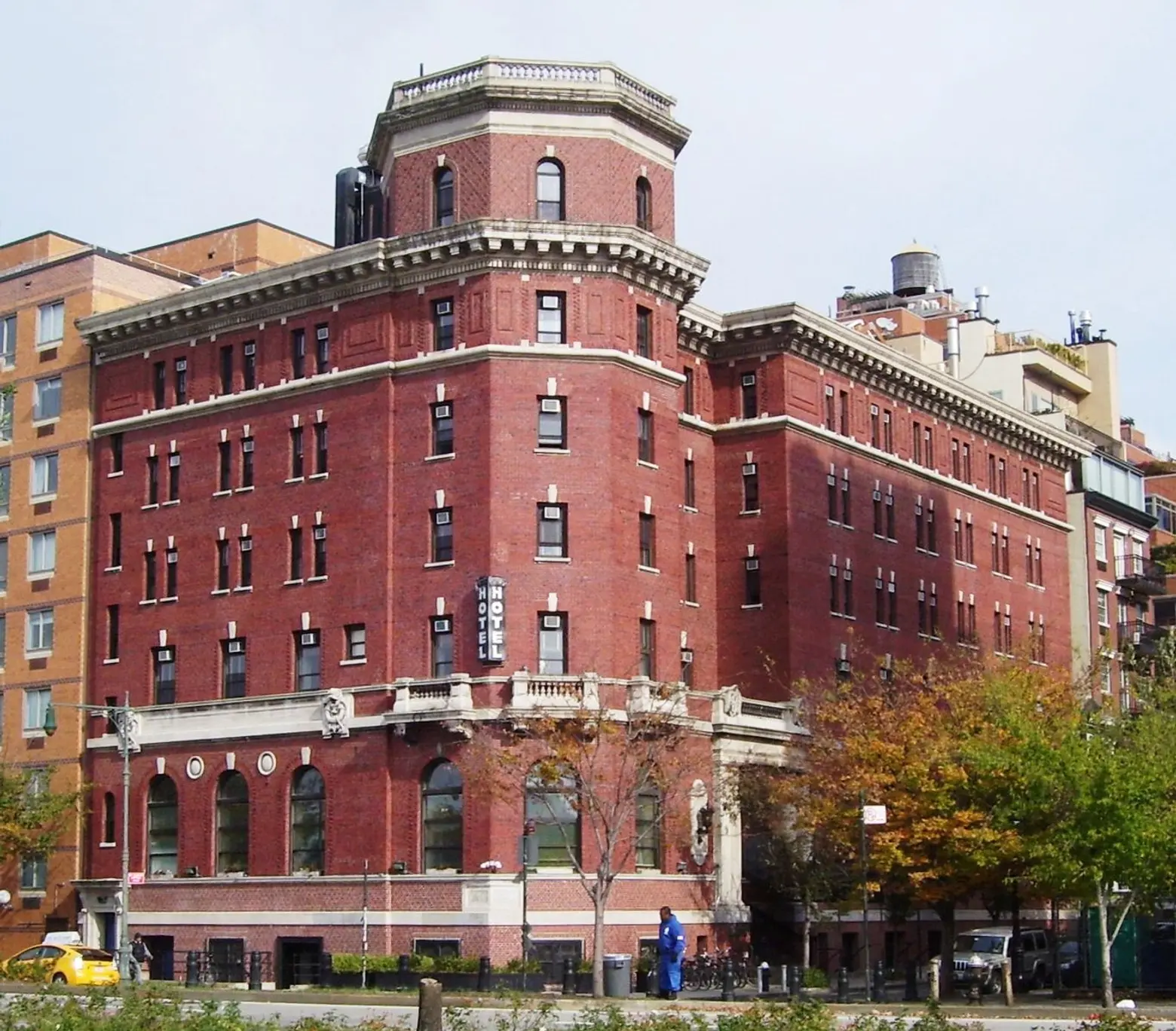
The Jane Hotel, via Wikimedia
The American Seamen’s Friend Society Sailors’ Home and Institute at 113 Jane Street stood across from Pier 54 on Manhattan’s west side. The building is now the Jane Hotel. Since the Home and Institute was located a stone’s throw from where the Titanic’s survivors came ashore, and it was an institution devoted to sailors and old salts of every stripe, the Institute provided food and lodging for the Titanic’s surviving crew and some of its passengers. The Home also hosted a memorial service for victims of the Titanic, with more than 100 survivors in attendance.
The building was built for sailors and retains many of its nautical touches, including anchors over the door, and life preservers on the façade. Additionally, the Institute’s 156 original rooms were designed to mimic cabins aboard a ship, a tradition the Jane Hotel keeps up to this day.
3. Titanic Memorial
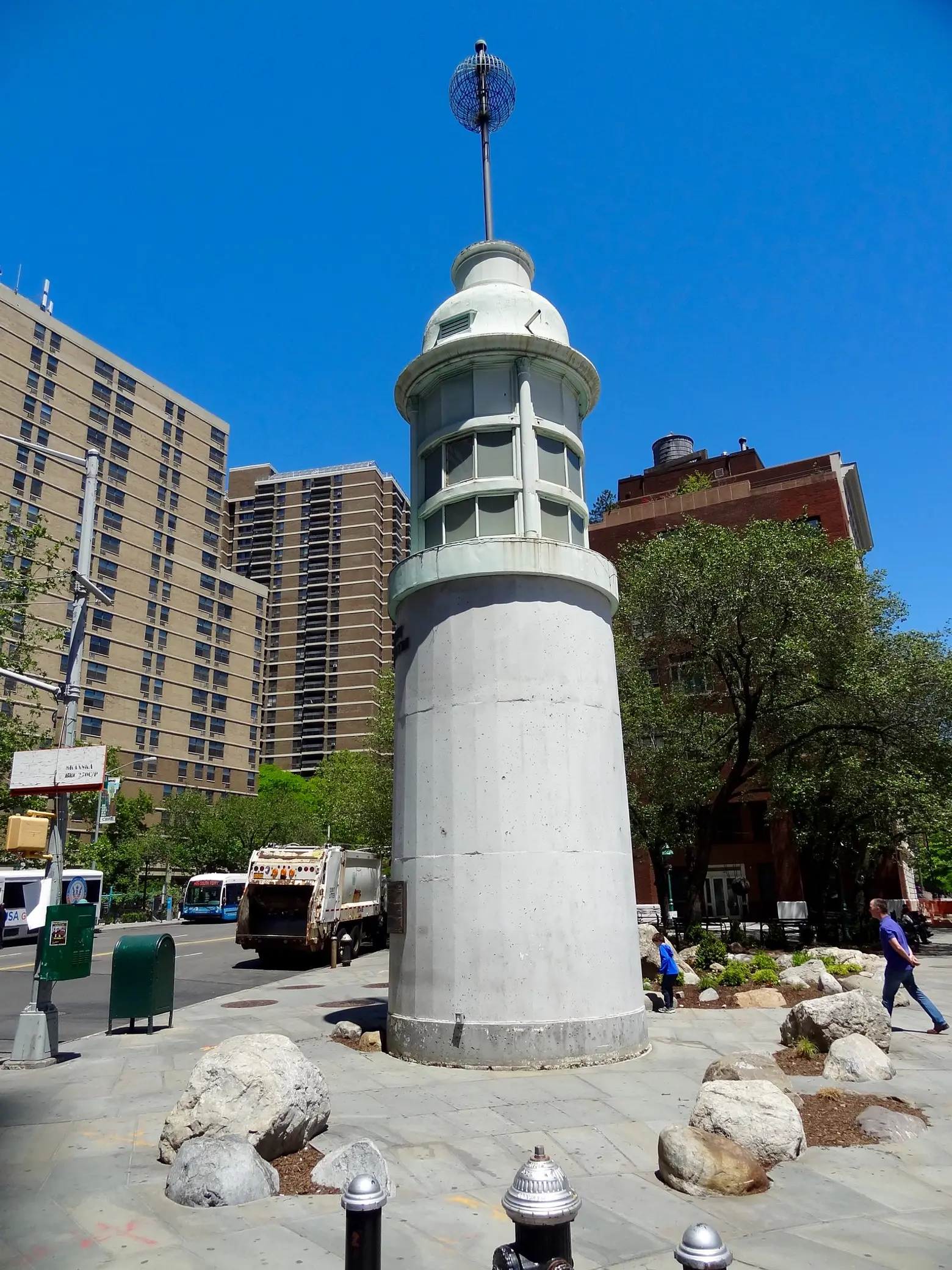 Titanic Memorial at the South Street Seaport, via Flickr cc
Titanic Memorial at the South Street Seaport, via Flickr cc
Since the South Street Seaport Museum stands out as the guardian of the City’s maritime history, it is fitting that the Titanic Memorial Lighthouse and Park stands at Fulton and Water Streets at the entrance to the South Street Seaport.
The Lighthouse, financed by public donation, was built by the Seamen’s Church Institute and dedicated in 1913, a year after the shipwreck. Originally, the lighthouse was a fully functioning beacon for sailors who plied the harbor. It stood atop the Seamen’s Church Institute at 25 South Street, and its green light was visible as far as Sandy Hook. The Lighthouse Memorial was donated to the South Street Seaport Museum in 1968 and installed at its current location in 1976.
4. Edith Corse Evans Memorial
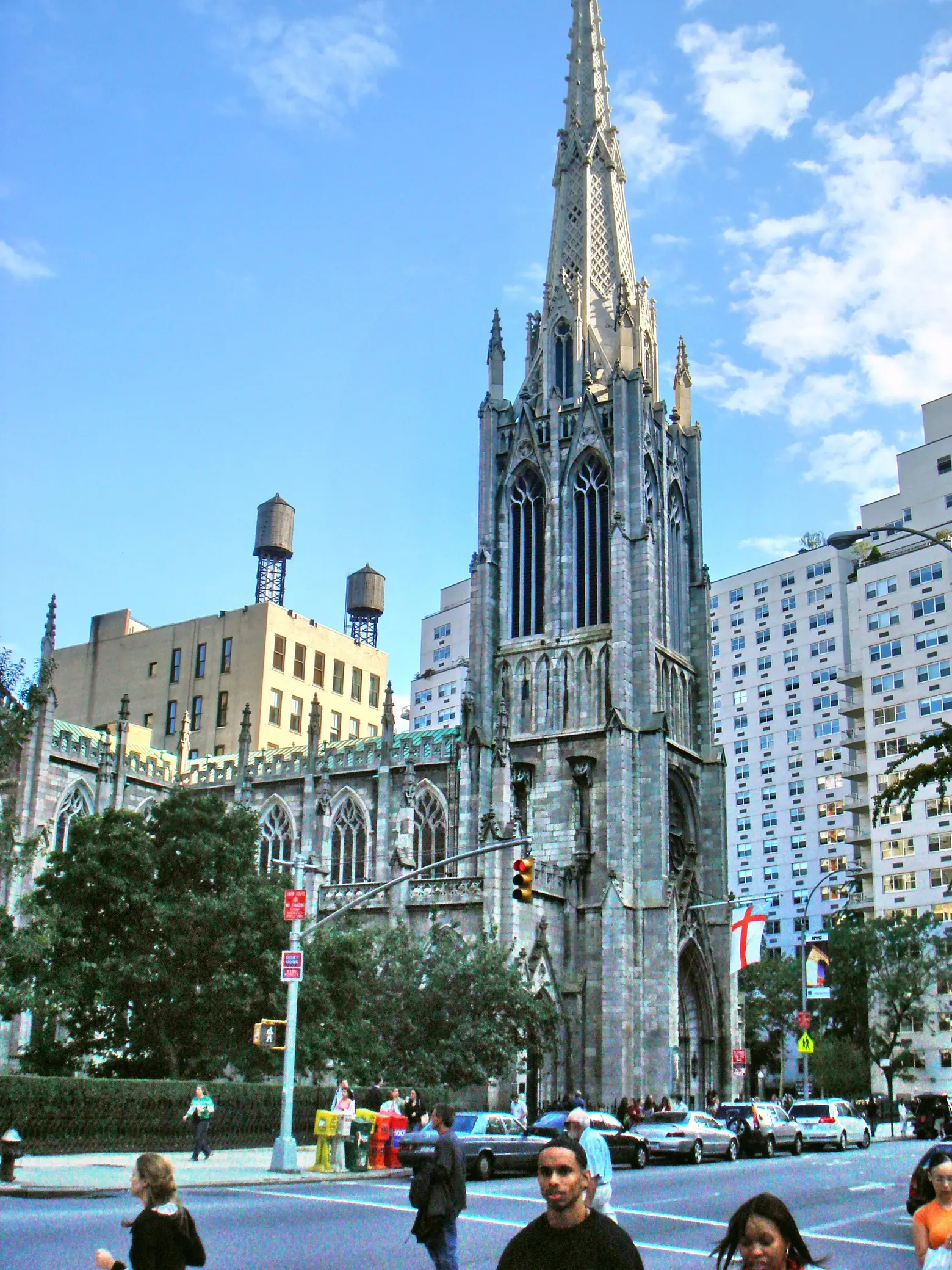 Grace Church via Wiki Commons
Grace Church via Wiki Commons
There are several other memorials around the city that honor specific passengers who lost their lives on the Titanic. One is the Edith Corse Evans Memorial at Grace Church, at 802 Broadway. The inscription on a stained glass window to the left of the lobby reads, “In Gratitude to God for the Memory of EDITH CORSE EVANS Who in the midst of life gave herself for others on the Titanic XV April MCMXII Trusting in Him who hath made the depth of the sea a way for the ransomed to pass over. Love Is Strong As Death.”
The 25-year-old Evans was one of just four female First Class passengers to die on the Titanic. There are several accounts of why Evans did not get to a lifeboat: one says she helped her aunt onto the last lifeboat, urging her to climb aboard first because she had children waiting at home; the boat was then lowered without Evans. Another says there was just one seat left, and Evans insisted her aunt take it so that she might come home to her children. A third says that both women got onto the lifeboat, but it became over-crowded and Evans volunteered to leave the lifeboat. The Memorial honors her selfless choice.
5. William T. Stead Memorial
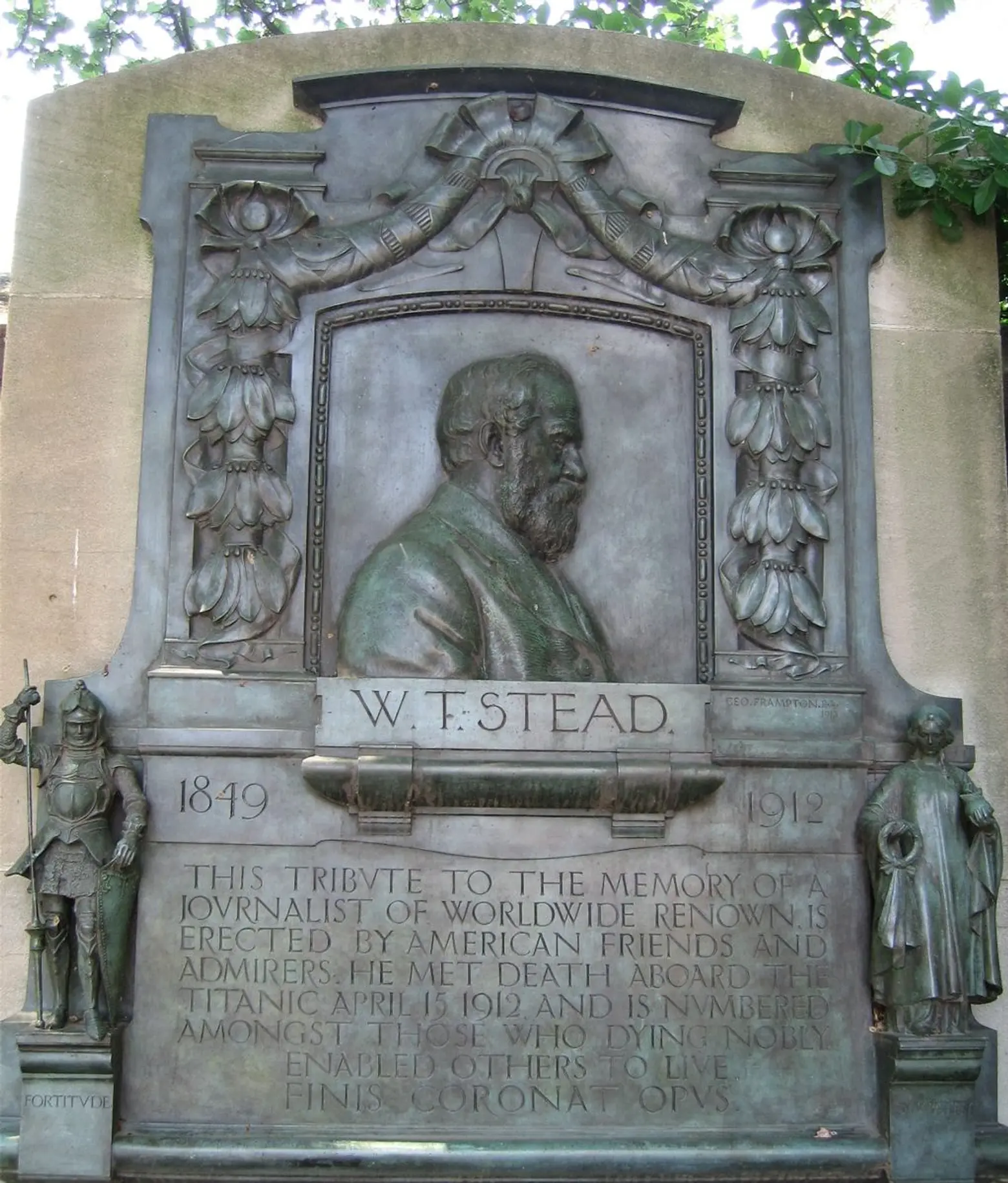
William T. Stead Memorial, via Wikimedia
The William T. Stead Memorial, at 91st Street and 5th Avenue, is built into the wall outside Central Park. The modest memorial is actually a 1920 copy of the 1913 Stead Memorial on London’s Embankment.
Stead was an English newspaperman who took on corruption, dabbled in Spiritualism, and advocated for international peace. He had proposed a permanent international peace organization and was sailing aboard the Titanic because President Taft had invited him to speak at a peace conference at Carnegie Hall. After helping others onto lifeboats, he calmly retired to the First Class smoking room to read as the ship sank.
6. The Straus Memorial and Macy’s Department Store
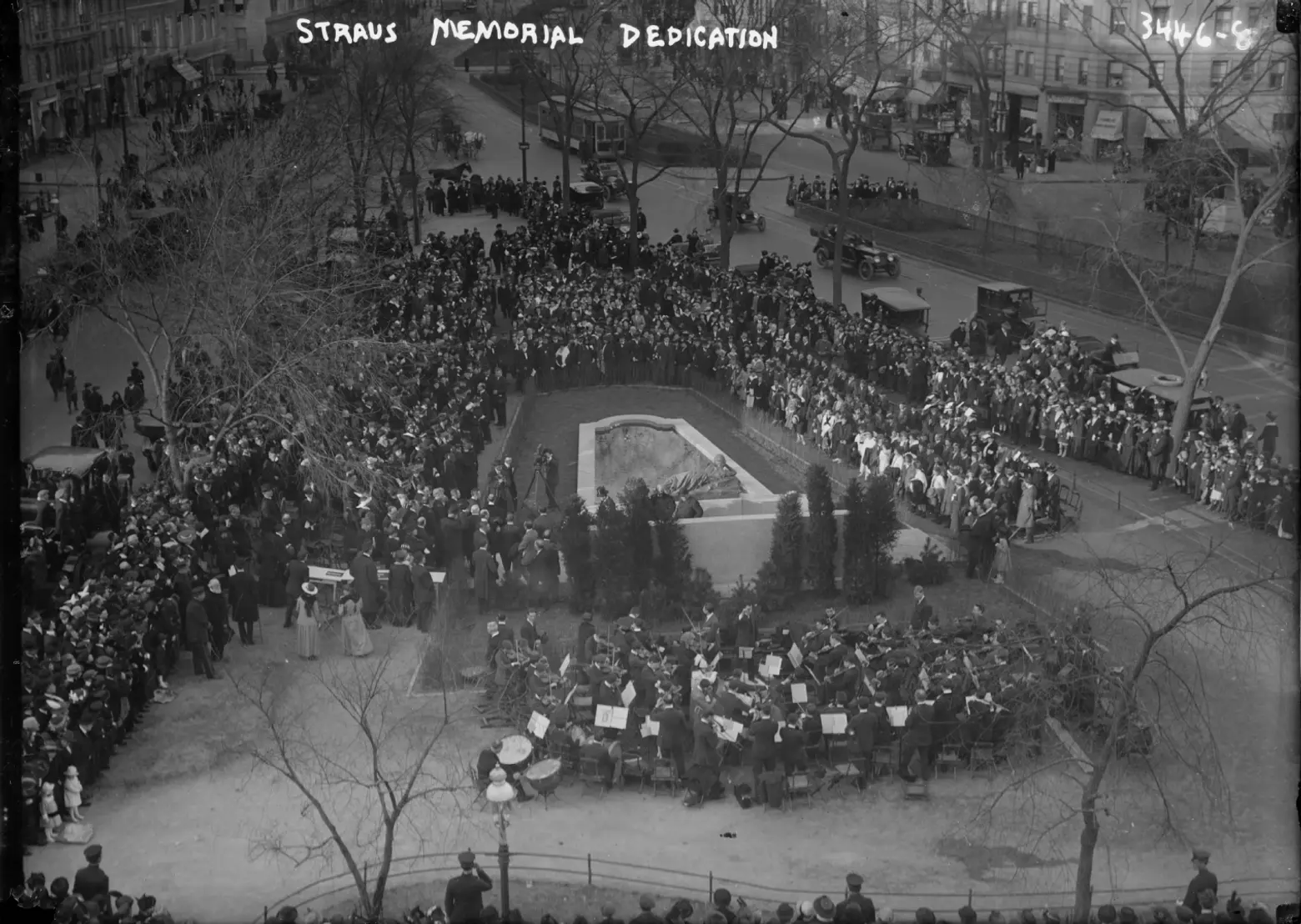
Dedication of the Straus Memorial, via Wikimedia
Straus Park and Memorial sit between Broadway and West End Avenue, from 106th and 107th Streets, near Isidor and Ida Straus’s former home at what is now 924 West End Avenue. Isidor Straus moved with his brother Nathan to New York in 1871. The duo transformed American retail, and Isidor is credited with creating the modern Department Store. The pair were part of Brooklyn’s Abraham and Straus, and the brothers took over Macy’s in 1896. Straus also served as a congressman from New York, and as president of the Lower East Side’s Educational Alliance.
 The Straus Memorial decorated for the 100th anniversary of the sinking of the Titanic in 2012, via Wiki Commons
The Straus Memorial decorated for the 100th anniversary of the sinking of the Titanic in 2012, via Wiki Commons
The couple was both offered seats in a lifeboat, but Isidor refused a place for himself when women and children had yet to be rescued. He urged Ida to leave without him, but she would not. The couple’s memorial service drew 40,000 mourners, and Andrew Carnegie was amongst the speakers who gave a eulogy. The granite and bronze memorial features a reclining woman in repose, modeled by Audrey Munson, best known as Miss Manhattan.
7. Archibald Gracie IV Tomb
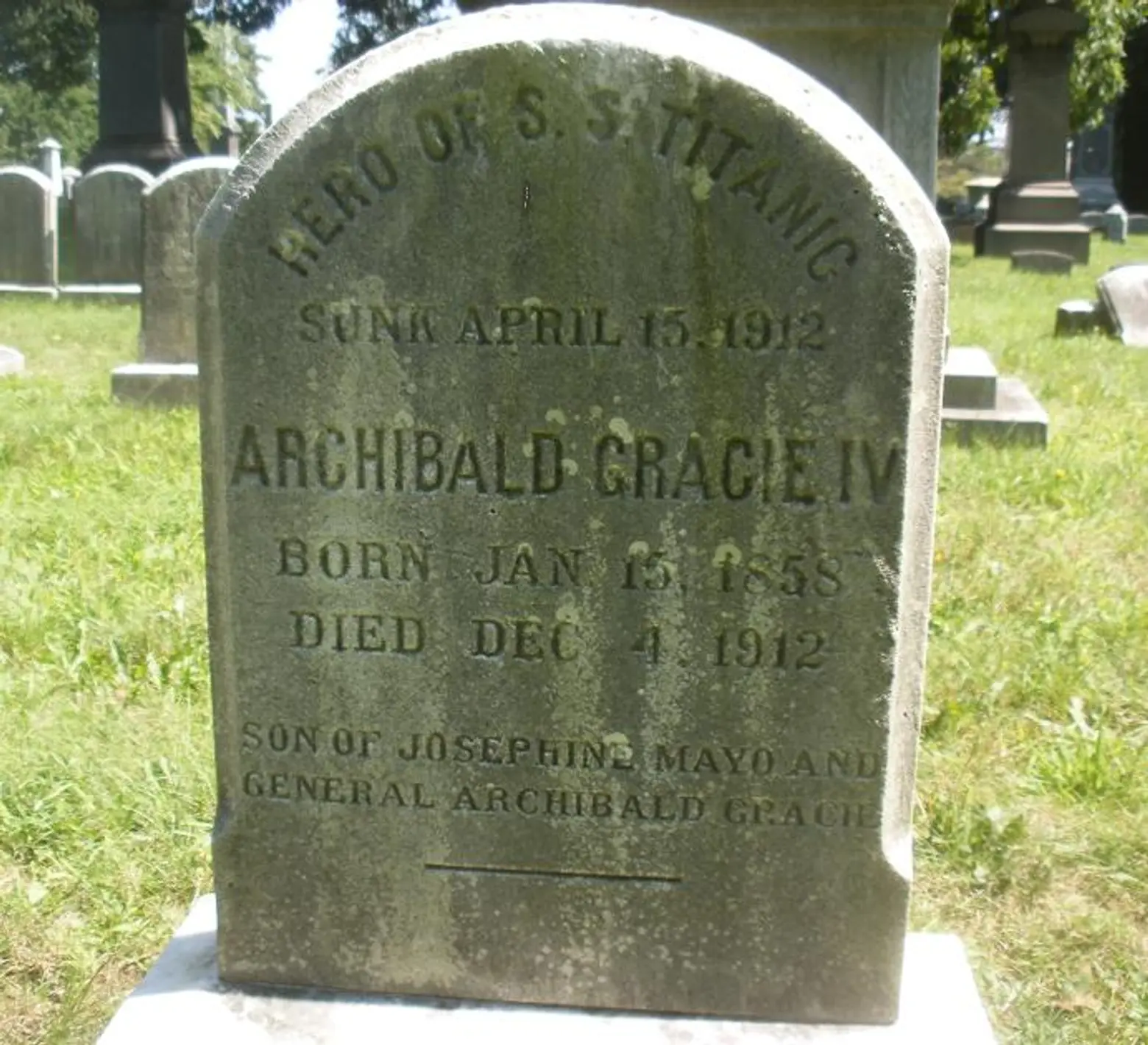 Archibald Gracie IV’s Grave, via Wikimedia
Archibald Gracie IV’s Grave, via Wikimedia
Another very prominent New Yorker aboard the Titanic was Archibald Gracie IV, a direct descendant of the first Archibald Gracie, whose home, Gracie Mansion, is now the city’s Mayoral Residence. Gracie went down with the ship while working to fill lifeboats with women and children. While in the water, he was able to grab hold of an overturned lifeboat and survive until the following morning, when rescue boats arrived. Though he made it home, he died just eight months later. His grave at Woodlawn Cemetary reads, “Hero of the Titanic.”
8. Astor Memorial Window
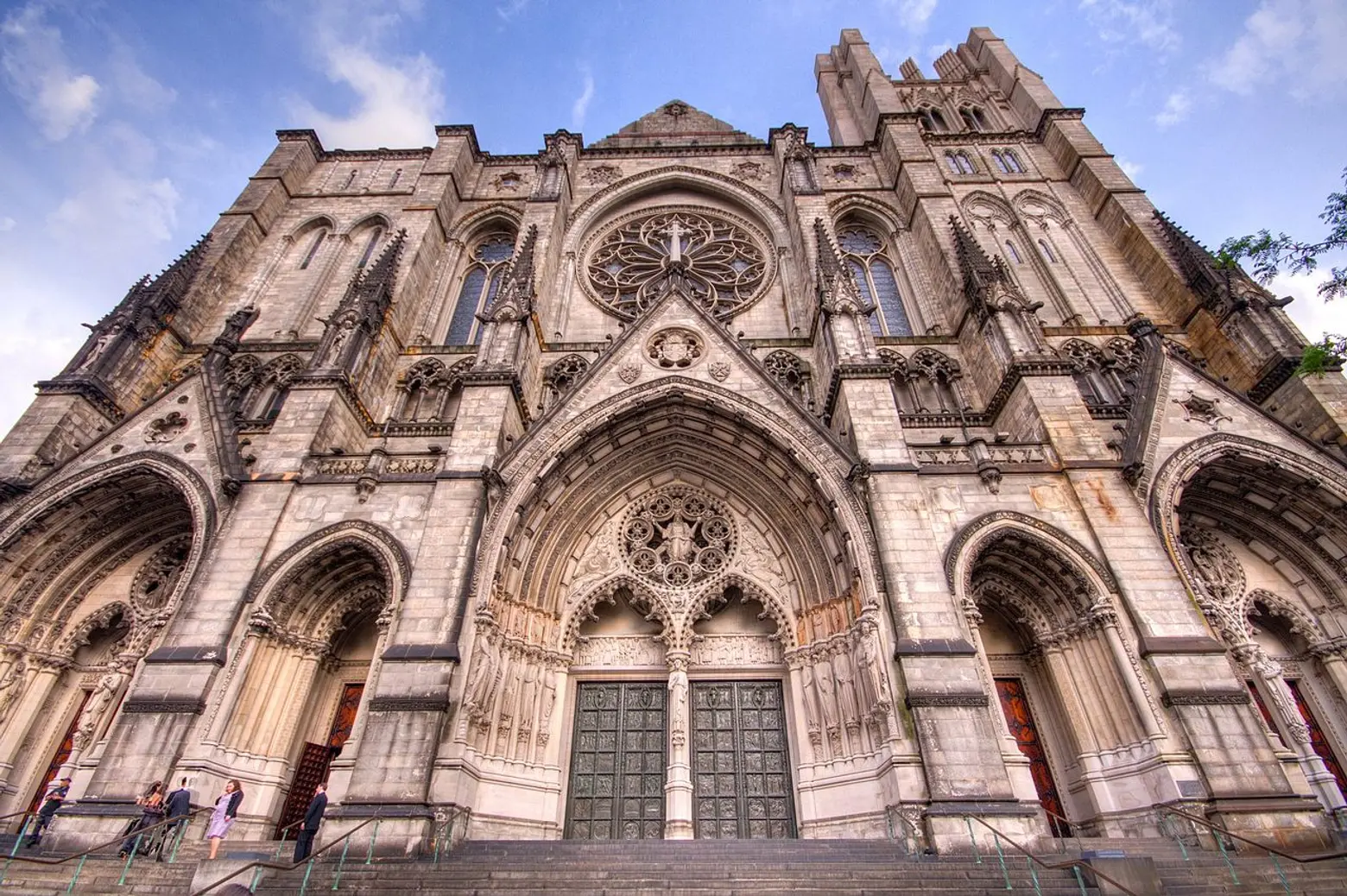
St. John the Divine, via Wikipedia
Gracie wasn’t the only fourth-generation scion of an extremely prominent New York City family traveling on the Titanic. John Jacob Astor IV may have been the most famous passenger on board. The Astors made their money in real estate, and John Jacob Astor IV built such prominent properties as the Hotel Astoria, the Saint Regis, and the Knickerbocker.
Astor’s body was identified by the gold watch, diamond cufflinks and diamond ring he was wearing. He is buried at Trinity Church’s uptown cemetery in Washington Heights. His death is memorialized in the stained-glass Astor Memorial Window at the Cathedral of Saint John the Divine.
9. The Guggenheim
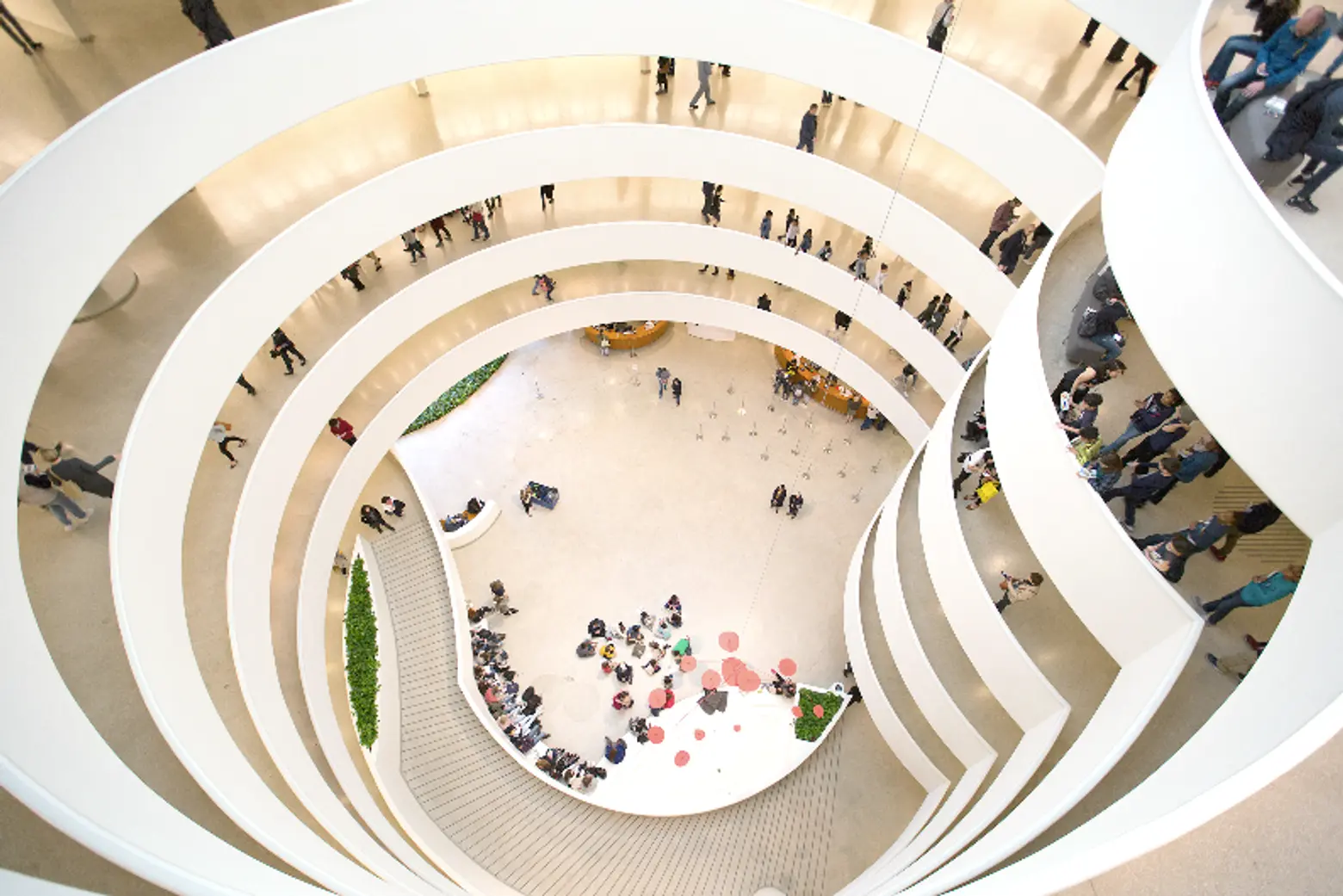
Guggenheim Rotunda, via Flickr
Benjamin Guggenheim, brother of museum namesake Solomon R. Guggenheim and father of art collector Peggy Guggenheim, also perished when the Titanic sank. He helped other passengers onto lifeboats then changed into his finest tuxedo so that he would be “prepared to go down like a gentleman.” Guggenheim and his valet met their fate in the Grand Staircase, sipping brandy and smoking cigars.
10. The Hudson Theater
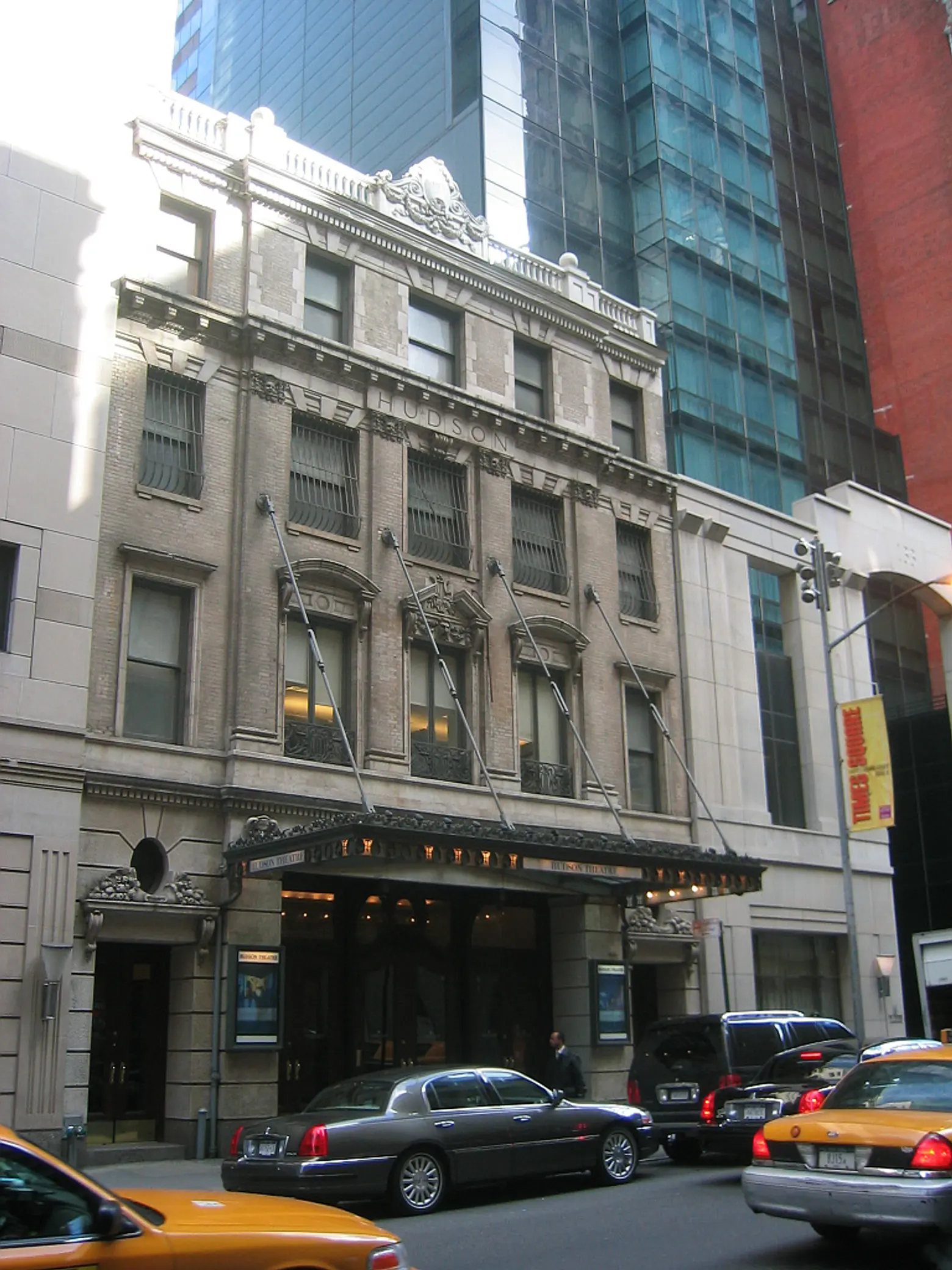
Hudson Theater ca. 2003, via Wikipedia
Since the Titanic disaster has been such rich fodder for dramatization, it is somewhat fitting that some passengers had deep ties to the New York theater scene. The Hudson Theater at 141 West 44th Street was founded by Henry Harris, who died on the Titanic. Harris was director of the Theater Managers’ Association of Greater New York and a Freemason. He was traveling aboard the Titanic with his wife Irene, who survived.
Irene Harris took over management of the Hudson Theater and became the first female theatrical producer in New York City, helping to launch the careers of performers including Barbara Stanwyk. She died in 1969 at the age of 93.
+++
 Lucie Levine is the founder of Archive on Parade, a local tour and event company that aims to take New York’s fascinating history out of the archives and into the streets. She’s a Native New Yorker, and licensed New York City tour guide, with a passion for the city’s social, political and cultural history. She has collaborated with local partners including the New York Public Library, The 92nd Street Y, The Brooklyn Brainery, The Society for the Advancement of Social Studies and Nerd Nite to offer exciting tours, lectures and community events all over town. Follow her on Twitter and Instagram.
Lucie Levine is the founder of Archive on Parade, a local tour and event company that aims to take New York’s fascinating history out of the archives and into the streets. She’s a Native New Yorker, and licensed New York City tour guide, with a passion for the city’s social, political and cultural history. She has collaborated with local partners including the New York Public Library, The 92nd Street Y, The Brooklyn Brainery, The Society for the Advancement of Social Studies and Nerd Nite to offer exciting tours, lectures and community events all over town. Follow her on Twitter and Instagram.
